A bucket-list destination, laced with Incan archeological sites, stunning natural sceneries, great restaurants and the energy of the magnificent Andes Mountains, the city of Cusco, located in the homonymous Peruvian region, is a melting pot of cultures and nationalities.
From the flight.
Declared a World Heritage Site by UNESCO in 1983, Cusco (also Cuzco) has become a major tourist destination, hosting nearly 2 million visitors a year. The Constitution of Peru designates it as the Historical Capital of Peru – and no wonder: the history of Cusco which had been the Incan Empire´s hub is quite impressive.

Arriving to the city, you are stunned by its altitude (3,399 m) as well as architecture which peacefully combines the original Incan stone structures with the colonial balconies. The Incas were building the walls of their houses in a slightly reclined angle to protect them from the shakings in the seismic zone (also the reason why the entrances and doors have their special form) and were using no concrete or other connecting material at all – each stone was precisely carved to fit in its spot; an ancient Lego one could say, ever more impressive as we, with all our technologies nowadays, are unable to reconstruct this art.
Many come to this region to explore the wonder of Machu Picchu, the Rainbow Mountain and Red Valley, the Sacred Valley and its Incan ruins in Ollantaytambo and Pisac, to visit Moray and Maras, and the many lagoons such as Kinsa Cocha or Humantay. However, I would recommend also spending a couple of days simply in and around Cusco, exploring by foot the many things there are to explore – and lots of them for free.
This article is a complete guide to the city and its surrounding, which gives you some tips on what to do in Cusco (sometimes even for free), explains everything concerning the Boleto Turistico – Cusco Tourist Ticket and recommends where to eat and sleep. If you are interested in one-day trips you can do on your own, tours with agencies as well as unique tours for which you want to align with other travellers in order to rent transport together and share the expenses, read the article HERE.
Top Experiences in Cusco
1. Try out some local hot chocolate which is traditional for the area and which was used by the Incas for spiritual purposes too. There are many cafés and museums of chocolate in Cusco where you can enjoy a cup of hot chocolate, e.g. at ChocoMuseo, Museo del Chocolate. The prices vary from 7 to 12 soles. Just follow your nose or recommendations.
2. Visit Casa Mantay (Mantay meaning Mama in Quechua), a charity house helping single underage mothers and their children. You can visit the house, see how the community works together and buy some of their products. They also have a little shop and café in Calle Plateros, near the main square. To arrange your visit, go to mantay.org.
3. Go kite-flying, horse-riding or just hiking to the Q’enqo forest, Templo de la Luna and Templo de los Monos (Kusilluchayoc). The areas of these ruins are filled with beautiful woods, small lagoons and hills with some stunning views. You also encounter natural caves, pristine water streams and eucalyptus groves.

4. Cuddle llamas and alpacas! OMG, you won´t want to leave this place! Situated right in Calle Loreto, at the Campo Artesanos, you will find the project called “Proyecto de Animales Inteligentes” which aims to show that llamas and alpacas are loving, intelligent animals which can help treat human perception problems, autism and various traumas. For more details contact +51 983 525 709.
5. Learn slackline walking or jumping: Fabrizio is a young loving and loveable lad teaching the basics of slackline for a minor contribution in the Q’enqo forest right by the Q’enqo ruins. Give him a ring at +51 957 112 409 or/and check his Instagram profile @slacklife.
6. Dance salsa! The Salseros Cusco meet regularly at various places and are truly welcoming. Contact +51 984 356 212 for more information and bookings.
7. Enjoy a free walking tour of Cusco, every day at 9:50 am, 12:30 pm, and 3:30 pm, meeting point by KFC at Plaza de Armas, next to the Cusco Cathedral. The guide will have the logo “Free Walking Tour Cusco”. The tour will take you through some of Cusco’s main attractions, including the San Pedro market, where you can encounter people from all over the world enthusiastically buying drugs illegal in other countries, sandalwood and other spiritual items, Peruvian souvenirs and musical instruments, the Qurikancha temple (the Sun Temple of the Inca Empire), Mirador de Plaza Sán Cristobal.
8. If you are keen on local art and crafts, enjoy a walk through the Barrio de San Blas which houses artisans, workshops and craft shops. It is one of the most picturesque sites in the city. Its streets are steep and narrow with old houses built by the Spanish over important Inca foundations. It has the oldest parish church in Cusco, built in 1563. Near the quarter, you find the beautiful, well-preserved Hatun Rumiyoc Street with original stone walls.
9. Take an hour walk out of town to get to Llaullipata, a quiet spot along the Rio Chacán hidden in a canyon surrounded by towering eucalyptus trees. Located close to Planetarium Cusco, the hacienda in Llaullipata was once home to an Inca princess Yupanqui who married the Spanish conquistador Francisco Pizarro. Today it is a popular place for easy walks, a relaxation with a book or picnics. The annual Llaullifest festival takes place here in July.
10. Walk from San Blas to Acueducto Colonial and continue from there up to the complex of Sacsayhuaman. Remember the Killke culture walled complex closes at 3 pm, but you can still get some marvelous views of the place from the hill with the Statue of Christ – Mirador desde el Cristo Blanco. The whole surrounding zone is truly interesting to explore by foot, you can walk to Q’enqo or Qhalispuqyo ruins from there too. Sacsayhuaman is a ceremonial Inca fortress believed to be the largest Inca architectural work during the peak period of this civilization. It is estimated that more than 20,000 men mined rocks from the nearby quarries and moved them 20 miles up the hill to build the site which allegedly covers the weight of up to 125 tons.

Types of Boleto Turistico to Enter the Sites
Remember that the entrance to the various sights in and around Cusco is only possible with Boleto Turistico (Cusco Tourist Ticket) of which there are two major types:
1. An Integral Ticket: a ten-day ticket for 130 soles which includes the entrance to 16 major sights: Sacsayhuaman, Qenqo, Puca Pucara, Tambomachay, Qorikancha Museum, Regional History Museum, Contemporary Art Museum, Popular Art Museum, Qosqo Native Art Center, Inca Pachacutec Monument, Tipon, Pikillacta, Pisac, Ollantaytambo, Chinchero, Moray
2. A Partial Ticket: each is worth 70 soles
a) Circuit 1 – Cusco Ruins: Sacsayhuaman, Qenqo, Puca Pucara, and Tambomachay – valid for 1 day
b) Circuit 2 – Cusco Museums and Monuments: Qorikancha Museum, Regional History Museum, Contemporary Art Museum, and Popular Art Museum, Qosqo Native Art Center, Inca Pachacutec Monument, Tipon, Pikillacta – valid for 2 days
c) Circuit 3 – The Sacred Valley Ruins: Pisac, Ollantaytambo, Chinchero and Moray – valid for 2 days
Where to Sleep
You will find many options for apartment rentals in and around Cusco. However, I would recommend renting an apartment only if you are a big family or more families together – so to economize. Otherwise, rather choose a hotel, hostel or a hospedaje. There are low budget, mid-range and luxurious options in Cusco and all of these have centrally located options. If you just come for a week or so, you want to be centrally located as it is convenient (especially for the tours), everything is “close at hand” and you get the personnel giving you advice and helping you out in various situations. Some of the lodgings also offer heaters which you will appreciate at nights as the temperature drops down to even zero. Most of them offer breakfast and tea all day long so that is another convenient thing.
Renting an apartment is better e.g. in Pisac, the Sacred Valley, if you come there for a longer period of time and want to enjoy a garden, a fireplace etc.
Backpacker La Bo’M
Located in the heart of San Blas, the hostel offers cosy rooms, really hot water in the showers and a fireplace in the main dining hall where travellers like to gather and chat or share some quiet guitar playing and singing. The place overflows with arty details and quite righteously uses the name La Boheme. In the yard, one finds a peaceful location for exercising or book reading, and should one get cold at nights the helpful staff is ready to prepare some warm bottles and tea. I loved the breakfasts which include freshly made pancakes and appreciated the help of the staff with arranging my tours etc. All hostel guests have a discount for the creperia located on the second floor of the historic building and the creperia itself is an amazing experience. By the way, unlike some other hostels and even hotels, here they have no trouble preparing a “breakfast to go” for your tours which start early in the morning and the breakfast to go includes some marvellous pancake too.

Dragonfly Hostels
Well-located just about a four-minute walk from the main square, they offer electric heaters for a small fee of 10 soles here and the hostel disposes of a kitchen one can use freely. The place is perfect for young travelers looking for a low-budget chill out place where they can socialize and have fun, play table tennis, chess or board games or simply relax in a hammock. The yard is perfect for yoga or other practice and in the evening one can get a beer or a coctail at the bar. There is a lovely cuddly cat in the hostel. Breakfast is available for 10 soles. The rooms are big and unless they are overbooked, they let you pay for the whole room if you wish to have it just for yourself.

Videos from Dragonfly Hostel.
Cusco Plaza Saphi
The hotel is located just a couple-of-minute walk away from the main square and it has a genuine genius loci thanks to the original architecture and several unique features, among them for example some original Inca stones down in the lobby, an original staircase and colonial balconies. The hotel is well-maintained and clean, the rooms offer perfect comfort with heaters available and hot water in the shower as well as the sink tap. The blankets are warm and you can get as many as you need. The breakfast is a buffet and tea (also maté de coca) is available at all times during day and night. The lobby is a beautiful place where one can admire the colonial balconies while enjoying the breakfast, reading a book or exercising. A little library is available by the reception where travellers can leave a book and pick one they would like to read.

Video from Cusco Plaza Hotel
Where to Eat
Except for the many amazing restaurants one finds in Cusco, make sure to give a try to eating at the local markets, be it the San Pedro market, or – better – the Carmen Bajo market (Calle Tandapata and Pumapaccha) where you also find the great Govinda Lila where they have amazing vegan menus for 15 soles and lovely kombucha – by the way, if you are keen on kombucha, you will love Cusco, as this fermented miracle is available at various spots where they home-make it.
Another vegan and vegetarian place anyone will enjoy, thanks to their beautiful garden, fresh flowers, candles, great desserts and even their own line of cosmetic products, is Green Point, right by the San Blas square, where the lunch menu costs 20 soles, where they are waste-conscious, always ask you if you want the remains of your food packed and where you find anything from sushi, to ramen bowl, lentil patty and Pad Thai.
If you are keen on trying out some local traditional dishes, I would recommend Runasimi or Inkazuela.
Inkazuela is located by Plazoleta de los Nazarenas and I went there out of interest as I saw a recommendation for it in one famous guidebook which claimed that they offer great traditional cuisine and amazing casuelas. I got a trout fish (from a local lagoon) with veggies and potatoes from the grill and a traditional rocoto relleno with pastel de papa (potato cake – basically layers of potatoes au gratin) for the appetizer, accompanied by a chilcano with locally grown strawberries. It was heavenly! I enjoyed the views to the sunlit square below the balcony where I was eating and the woods above in the hills, as well as the kindness and attentiveness of the staff who was ready to explain any question I could possibly ask about the food and drinks served. The restaurant offers some Andino “must haves” such as Giso de Cuy or Cuy al Horno but make sure if you want to try out any of these specialities (especially the ones from the traditional stone oven) to reserve in advance as these dishes take a while obviously to prepare. The “ambiente” of the restaurant is really welcoming and warm with little details that easily draw attention and some pretty cool paintings.

Runasimi is a top-notch, delicious, gourmet-like restaurant offering the best local products in a beautiful environment. This restaurant is totally among my top ones in Cusco. During my two years of living in Peru so far I´ve had plenty of chances to try out local cuisine in various parts of the country. I must say this restaurant is well ahead on the list of what I would recommend. Though centrally located, it is an oasis of peace – and harmony of tastes and flavours. The restaurant is devoted to the bone to being Peruvian (every single ingredient is grown locally, the owner – who is also the chef – would gladly tell you what is in each dish and where exactly is each ingredient from, i.e. which village of the Sacred Valley); even every single bit of the interior decor was made locally. There are even handmade textiles made by the grandmother of the owner. With slightly rustic, romantic atmosphere, candlelight, menu in Spanish as well as Quechua, you know right from the moment you walk in that you are about to have a splendid experience. You will find all the traditional local dishes (Lomo, Aji de Gallina, Ceviche de Trucha, Trucha a la Parilla, Rocoto Relleno, Adobo Cusqueño, Tarwi Grano Adino, Carpaccio de Alpaca etc.) but with a unique touch of aestheticism and enriched with innovative taste details. The restaurant of a special name (runa = person, simi = mouth, in the language of the high Incas) only opened a month before the pandemic, but I am sure it is soon to be hard to book a table there. By the way, try out the signature lemonade with coconut cream they have on the menu, it truly is something!

Now, if you wish to try something more European on the contrary, make sure to head to Creperia La Bo’M. Situated on the second floor of a historic building in the centre of Cusco (the renowned San Blas quarter), the creperia is an amazing experience: I honestly must say the last time I had such good galettes and crepes was in Bretagne, France. They even sell artisanal ciders and pastis here and everything for a very affordable price. If you have the sweet tooth, go for the orgasmic La Boheme pancake with salted caramel, it truly is unforgettable. As for the main, I had a galette with eggs, cheese and tomatoes and it truly was great and a portion so big I could not even finish it off (as I feasted on the complimentary olives before and wanted to leave some space for the dessert). A 100% recommended without a doubt. By the way, I love the fact you can observe the preparation of your food as the kitchen is built as an open one, protected with glass. The views to the city are stunning from the terrace of the restaurant.

Last but not least, a good place for a quick mid-range dinner is the newly opened Sushimura sushi bar. Except for truly good sushi they sell artisanal beers and home-made kombucha. The prices range around 20 soles and the portions are big enough to fill you up. I had the Makimura chef´s speciality and loved every bit of it; I swear I did think of licking out the “secret salsa” of the plate but remembered my good manners. Thanks to the place being designed as a sushi bar you get a chance to observe the preparation of your dish (including all the tricks with the flamboyant gun) while having a chat with the owner-chef and his assistant. A place of good vibes, you are sure to find your way back every now and then when getting the munchies.
Here is a video from Cusco and its surroundings.

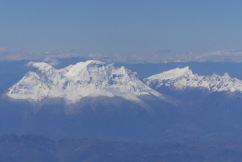







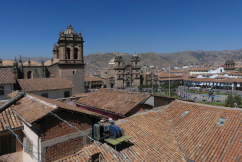





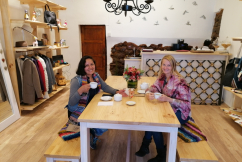


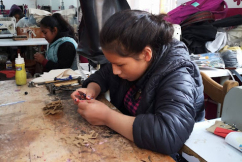









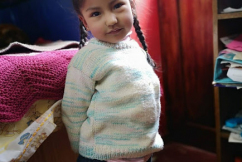



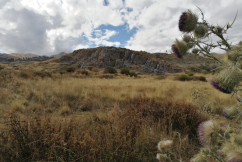


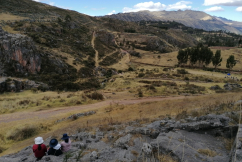







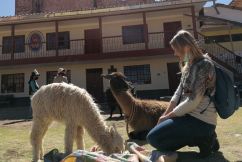






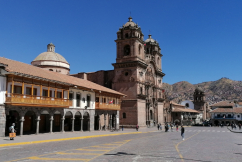

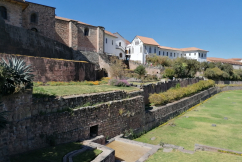





















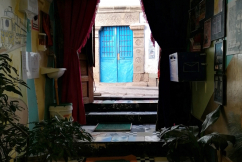













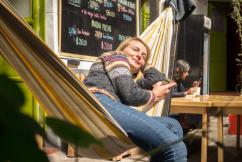




















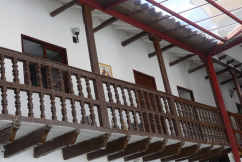





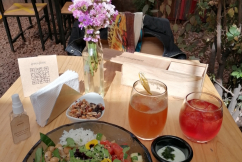





















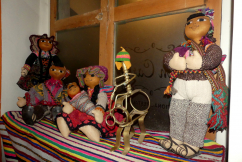









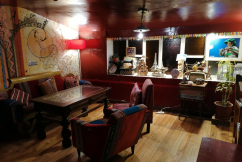





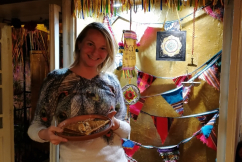



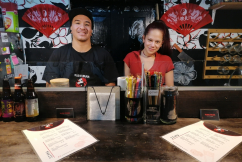

Martina, I love what you do, I wish I could travel like you.
Seems like you are living the dream.